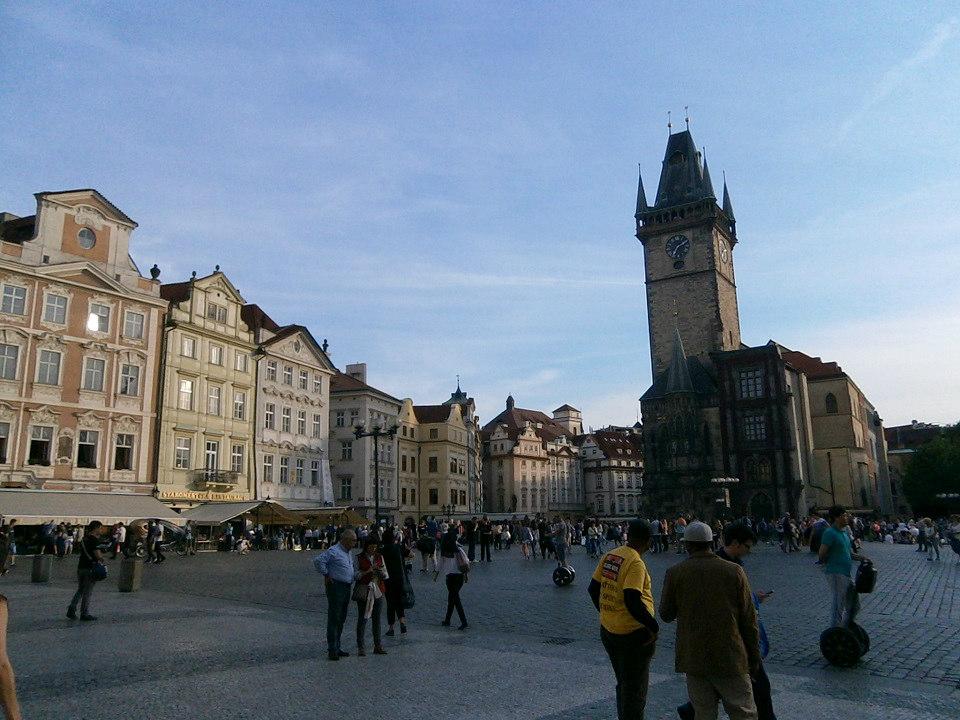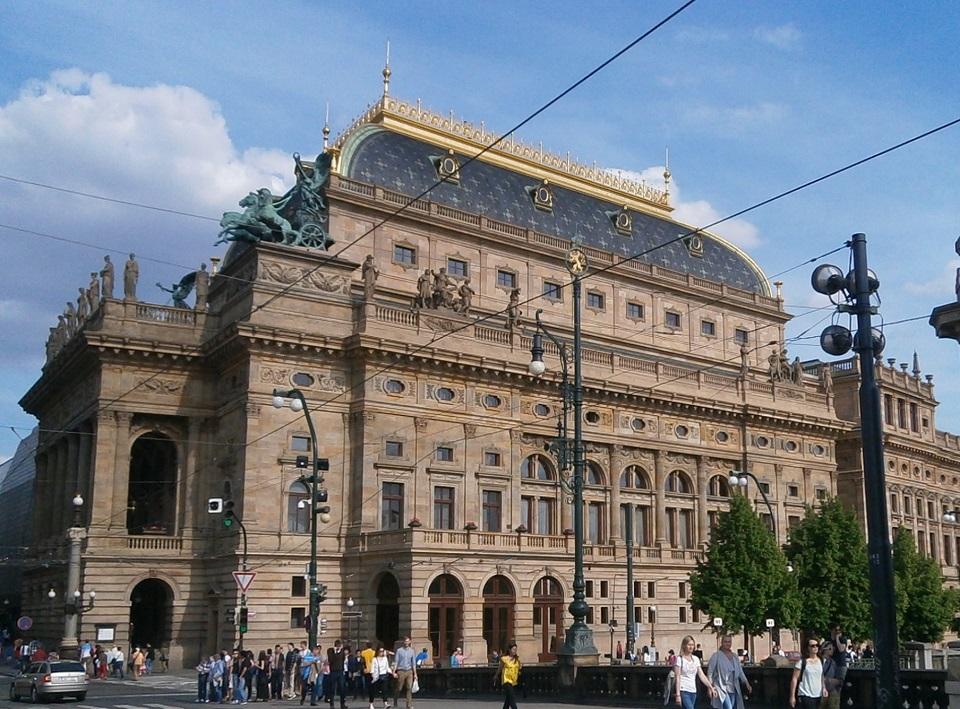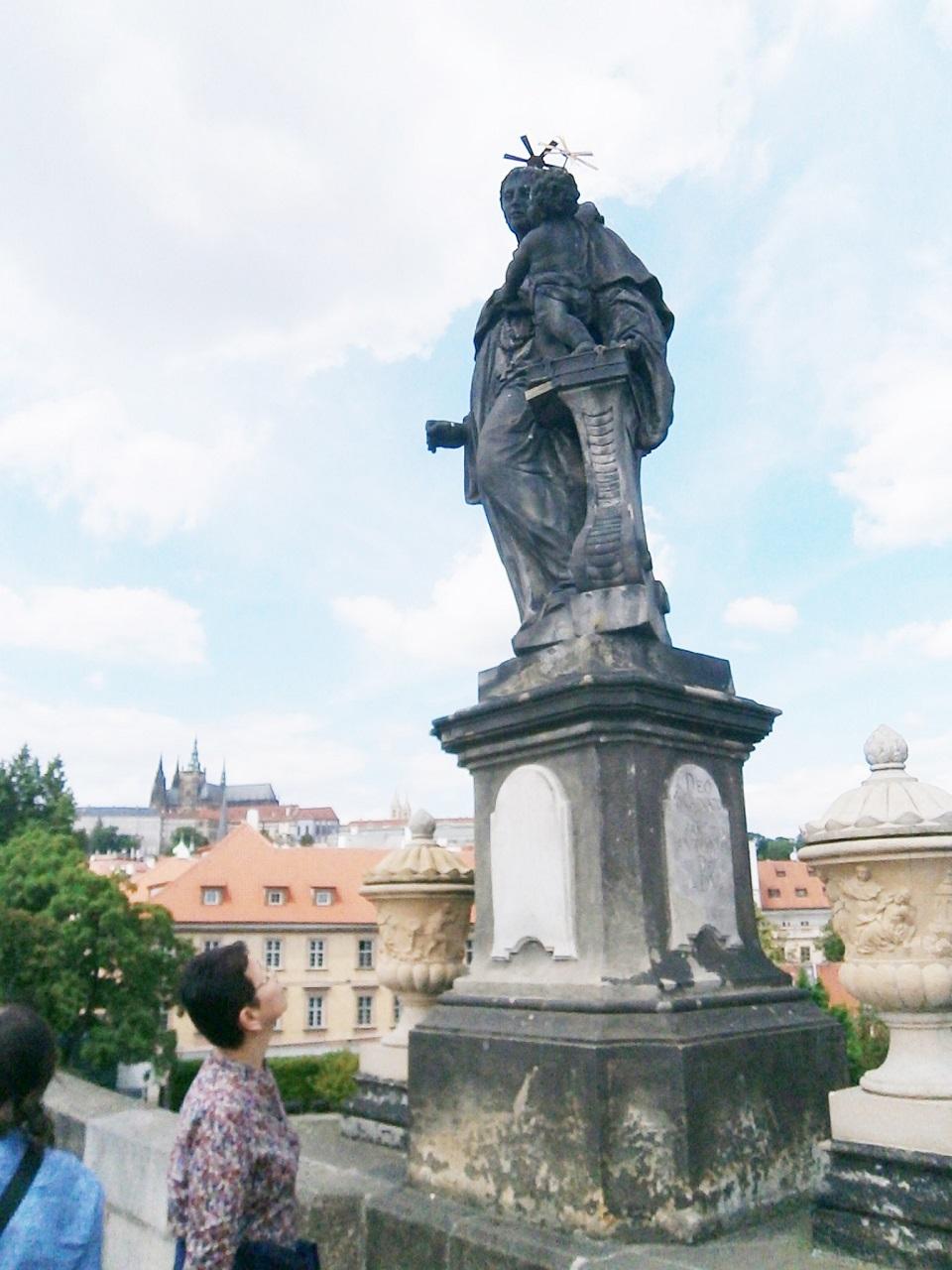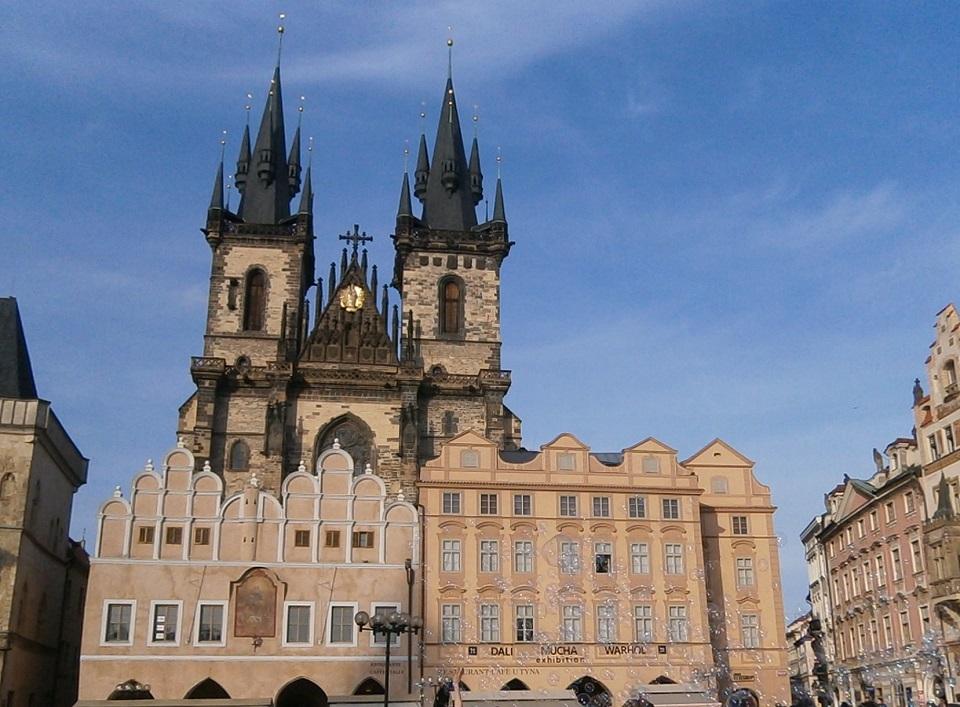An early morning in Prague

It was 5:30 in the morning, and my husband Alex and I were already briskly walking out onto cool, bright Ostrovni Street from our hotel. We were in Prague, the capital of the Czech Republic, in late spring, and the long days towards summer had brought many visitors to the city. We decided to wake up early to avoid the crowd.
Indeed, the streets were deserted, except for a few morning persons who, like us, were also wrapped in three layers of clothing to ward off the morning chill.
We passed by the neoclassical National Theater (Národní Divadlo), massive and silent in the morning, with bronze goddesses riding chariots atop the building's corners. Opened in 1881, it showcases ballet, opera, and Czech drama.

Crossing the street we reached the Legií Bridge (Legií Most), under which flowed the Vltava River. There were almost no cars around, and it was so quiet and serene. We followed the course of the river, noting the cool, almost icy breeze. As the sun started to rise, the chilly atmosphere slowly dissipated.
We walked further until we reached the foot of the iconic Charles Bridge (Karlov Most). At sunset the day before, we joined the crush of sightseers here. In spite of the crowd, Alex and I enjoyed the old European atmosphere, our feet registering the cobblestone streets, our leg muscles adjusting to their uneven surfaces.
From one end to the other, the bridge is 671 meters long and 10 meters wide. During construction, King Charles IV purportedly laid the first stone on an auspicious day, and at an equally auspicious time: exactly 5:31 a.m. of July 9, 1357—forming a chiasma of a balanced number (1-3-5-7-9-7-5-3-1) that augured well for the bridge.

Through the centuries, the bridge experienced bloody battles, world wars, natural erosion of its pylons, and flooding. But it has endured, and to this day symbolizes the undaunted spirit of the Czech people. It was even said that one could not claim to have visited Prague without standing on Charles Bridge at sunset. We gazed at the many historical and religious statues that dotted the bridge, each one carved by renowned sculptors, although most of the statues were now replicas of the originals. Stalls sold trinkets, hand-made jewelry, paintings, shawls, and sketches done in minutes; performers enlivened the air with their music: solo flutes, a band of eight playing rock music, a guitarist. Over all this festive atmosphere loomed the Prague Castle in the distance, with St. Vitus Church’ spires beside it.
On that early morning though, Alex and I almost had the Charles Bridge to ourselves, except for the pigeons and a couple: an Asian lady in her wedding finery, complete with lace veils and train; and her partner, in a tuxedo. They were having their wedding photos taken, with the old bridge as backdrop, including the beautifully carved images lining the walk.

I had more time to quietly contemplate the statues, especially that of San Antonio de Padua. I thought of my brother Anthony, who was named after the saint by my mother, who wore her San Antonio brown dress with its beige sash during Sunday Masses. I paused and looked closely at the crucifix, then rubbed the plaque at the base of the statue for a wish to be granted. The cool air soothed body and soul; after crossing several time zones the day before, our circadian rhythms were still adjusting to local time.
We walked back towards the Old Town (Staré Mesto), enjoying the narrow lanes, old cobblestone streets, and beautiful façades of old edifices. Before we knew it we were at the edge of a wide clearing, beside a sign announcing an evening concert. Looking up we saw a big church, its beige pillars and walls glinting in the morning sun. It was the St. Nicholas Church in the Old Town Square (Staromestské námestí).
Also in the square is the medieval Old Town Hall (Staromestská radnice). By itself, it is an amazing edifice, with its dark turrets and a small glassed-in chapel window jutting out. But it also has the beautiful Astronomical Clock (Orloj).
_2016_06_27_18_20_37.JPG)
Installed in 1410, it is the oldest astronomical clock in the world that is still in operation. There are two large golden dials: the upper one shows the positions of the sun and the moon in the sky, while the lower one has a calendar dial representing the twelve months. Every day, visitors wait for and cheer on the “Walk of the Apostles,” an hourly event in which moving statues of the apostles come out, with a skeleton representing Death striking the time.
From the town square too, one could see another Prague icon: the twin black spires of Our Lady Before Tyne Church (Kostel Matky Boží pred Týnem). The two main spires, rising 80 meters high and topped by four smaller spires, have dominated the skylines of Prague since the 14th century. The church is open to visitors on certain hours. At night, especially weekends, musical concerts are held inside the church, and everyone is welcome to attend.

Behind this majestic church was a smaller but no less spectacular one, the St. James. The interior designs and images took our breaths away, as we stood amidst the splendor of a baroque altar.
Later we repaired to a small bistro tucked into a corner behind the Tyne Church, away from the now-growing crowd, and enjoyed local fare: potato dumplings in a hearty beef stew. — BM, GMA News




